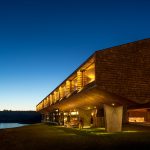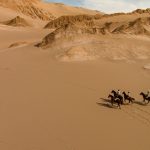Life is all about choices. You collect information, then weigh the pros and cons. If you’re lucky, you ask some experts along the way, and get good advice before making the decision. If you do the right research and talk to the right people, and add a dash of luck, the stars align and you get something spectacular. He’s far too down-to-earth to put it that way, but someone who’s seen some spectacular fruits from his own decision making is accomplished skier and lifestyle photographer, Nils Schlebush.
Nils is French, Estonian and German. This NY-dwelling lifestyle photographer keeps it fresh, with assignments for magazines like Travel + Leisure, Conde Nast, Town & Country, and Ski Magazine taking up a big chunk of his time, and he also shoots for countries’ tourism boards, when he’s not playing tennis, skiing, or spending time with family.
He lived in Germany until he was twelve, and later lived in Spain with his parents and three siblings. When he and his family first moved to Spain, it was a big cultural shift, because Spain and Germany were very different from each other at that time. It would be fair to say that in the 80s, Spain was just coming into its’ own, shaking off 39 years of rule under Franco. The drastic shift from Germany to Spain probably led to some of his earliest observations of the physical world, which would come out later in his photography. In short order, Nils also became fluent in Spanish, in addition to the French, German and English he already spoke.
NILS IS THE HOST OF OUR BEST OF CHILE SKI TRIP THIS AUGUST. LEARN MORE >>
He thought for a time that he might become an architect. After studying in Spain, he was set up to go to Montreal via London, where his godfather lives, to work at a friend of the family’s architecture firm for the summer. On the way back to Madrid from Montreal, he stopped in New York for a week, and using the gift of a fresh-out-of-the-box Minolta X700 that his godfather had given him, he accidentally fell in love with photography. He spent a week in NY in the summer of 1988 taking photos of everything he saw. “I just walked around, and photographed the whole city, and thought this is a cool way of seeing life and recording it, showing it.”
Nils returned to Spain, where he would later meet his wife Lisa working in fashion photography. The two of them lived there for years, into their 20s. But they started to feel that perhaps they were more driven than the culture around them allowed for. With more creative energy than they knew how to channel in Spain, they suspected they needed a change, and eventually decided that they “needed to do this now, couldn’t go out for a drink every night and expect to get things done.” At the time, they felt the best options were either Paris or New York. New York seemed like more of a challenge, so they moved back to the city where Nils had fallen in love with photography years before. “For two years,” they thought. They’d move to New York for two years.
Nils and Lisa started anew in New York, assisting on high fashion photography shoots. One winter, to escape the cold, they arranged a three-week long trip to Cuba. It was 1997. Instead of black and white street candid shots, which were all the rage at the time, showing the Havana-heavy shots everyone else was taking, heavy on the black and white, they took what they’d learned in fashion photography, including high color saturation, and more artsy shots and applied it the people and places of Cuba. They were headed towards Santiago, but stopped about halfway there, in Trinidad a town near the southern coast, about 300 km from Havana. Here they shot film and Polaroids, gifting photographs to people as part of the project. Nils recalls a beautiful yellow wall, and a line of people waiting to get their photos taken.
That trip to the colonial city in Cuba turned out to be a career-altering decision, taking Nils and Lisa from assisting in fashion photography to running their own shoots, and it’s been nonstop action since then. They got their work in front of magazines, specifically Travel + Leisure, and soon found themselves whisked off to Malaysia to shoot there, and soon after, to Ecuador.
Photography would continue to shape their lives, in between trips to Europe to visit Nils’ family. In winter, Nils would also ski there, following a long family tradition set out generations before in Estonia, and Andorra where his family had moved for cleaner air for his grandmother, who had breathing problems. He guesses he started skiing at about six, and has solid memories of being ten and thinking that being out in the mountains was fantastic. Nils specifically credits his mother, who was on the Andorran ski team, and whom he refers to as “the mountain goat of the family,” for encouraging that love of the mountains, which has taken him all over the world, for work and for pleasure.
Back in the United States, magazine work led Nils and Lisa to do a spread on upstate New York, along the Hudson Valley, an area that evokes New England, with riotous autumn foliage, and winding roads. It was at a time when comfortable and creative New Yorkers were looking to the Hamptons, the stylish east end of Long Island of movie star and see-and-be-seen fame. While up in New York’s close-in upstate (still easily accessible by train or car), they looked at each other and realized they liked it up there. Post September 11th, it seemed like a good opportunity to make a change. They liked the people, the fresh food, and thought they could make a go of it. They rented for a year, and then found their current home, which they learned to remodel as they went, in Saugerties, NY.
All the while, while building a family and professional life in New York, travel was a constant. In addition to family trips, there was work and exploration in various hemispheres, including trips every year or so to Chile, starting in 1998 accompanying the Parsons troupe, when Nils says he fell in love with the country.
He has a special place in his heart for Santiago, which he says reminds him in some ways of Madrid, when he first lived there, but has also visited much more of Chile than just the capital city. He’s been north to the Atacama, spent time in the hillsides of Valparaíso, traveled through Chilean wine country, and visited the Lakes District. But, called to the bluebird fresh untracked powder, on many trips, he especially loves finding himself skiing the slopes of central Chile, easily accessed from Santiago. After having skied in Chamonix, the top ski centers all over Europe, and to remote places like islands in the North Atlantic, accessible only by helicopter or boat, I asked him, “why Chile?”
There are things about it that make it different from other places he’s skied, he says. On the one hand, it has a European feel, the sharpness and contrast of the mountains, the ruggedness, comparing the Andes to the Alps. But on the other hand, what he loves about Chile is that “it’s rugged, and it looks like there’s nothing out there. In the Alps or in the United States, there’s a road.” You look at the backcountry area near Valle Nevado, or Portillo and you look out to the other side of the resort and there is nothing there. It’s you and the wild.” He loves that perception of inaccessibility, he says.
Wilder still, he says, is Ski Arpa. Exclusive in the sense that you and your small group are the only ones there, but also, he says, there’s a different vibe. Chatting with Austrian-born owner Toni Sponar and his son, Anton as an added plus. Toni was an early visionary into Chile’s future as a ski-destination, and bought a chunk of Chile’s best back valleys not far from the city of Los Andes. This private, family-run cat-ski only area of more than 800 hectares combines two back valleys that top out at over 3700 meters where skiers and snowboarders define their own adrenaline-fueled descents. Nils loves it for the challenging terrain, and because of the faraway feeling you get being there, even though you’re only about 100 km from Santiago.
On an upcoming trip to Chile, in August, 2017, Nils will be bringing photography and skiing together, helping accompanying a trip to Tres Valles (of which Valle Nevado is part), Portillo, which is in the shadow of the continent’s tallest peak (Aconcagua, 6962 meters), and the aforementioned Ski Arpa. For this trip, he’s still not sure which skis he’s bringing, but he figures he will limit himself to two sets, one for more all-around, and one for touring. But definitely one pair that’s wider for days when there’s been a dump of 2-4 feet of fresh powder. Definitely something for that, he says. And though he also snowboards, he finds skiing lends itself better to packing and unpacking photography gear, so on this trip he’ll be on skis.
In terms of photography equipment, he’ll come a bit more heavily-laden, likely kitted out with a chest-mounted GoPro, a drone for flyover and panoramic shots and the Canon 5D Mark III and 5DS fitted with 16-35 and 70-200 lenses, respectively. The 16-35 is lightning fast for when he’s closer, and the versatile 70-200 is great for sports, landscape and portraits. But at the same time, he couldn’t be less of a snob, first joking that he’s going to shoot with his phone, before divulging what’s in his photography backpack, and finally saying, “it doesn’t really matter what you’re going to shoot with, it’s just a tool, get the image you can, and that’s that.”
But maybe you knew that, because you’re a photographer, yourself. He loves it when people ski with their own cameras and is happy to talk shop on the slopes. He says people sometimes get stuck on the bright-white light, on metering, or are simply accustomed to more static conditions, and he can point them in the right direction to get their cameras to do what they want them to do. Or he can talk to participants about photography après ski. But he also fully understands that even for avid and professional photographers for most people, photography is photography, and skiing is skiing, so they may prefer to leave their cameras back at the lodge.
The beauty of having a professional photographer on the slopes with you is that you can leave your camera at home, he says. “People want to concentrate on the good skiing, the powder… having a good time,” he says. They want the awesome bright blue sky shots in vibrant colors with air and depth and fluffy rooster tails or chunks of clinging snow falling off skis when they get air, because for people in love with the mountains, ski season is never long enough. With a photographer on board, “they can go out and enjoy themselves, but also have these photos as great memories.” There’s no better place for a skier and photographer than Chile, and Nils knows it, and is already planning future trips down here.
Twenty-two years after leaving Spain to form a life, family, and career all over the world, I guess you could say Nils knows a good decision.
Want to join Nils in August for the ski trip of a lifetime? Ask us for more information.

